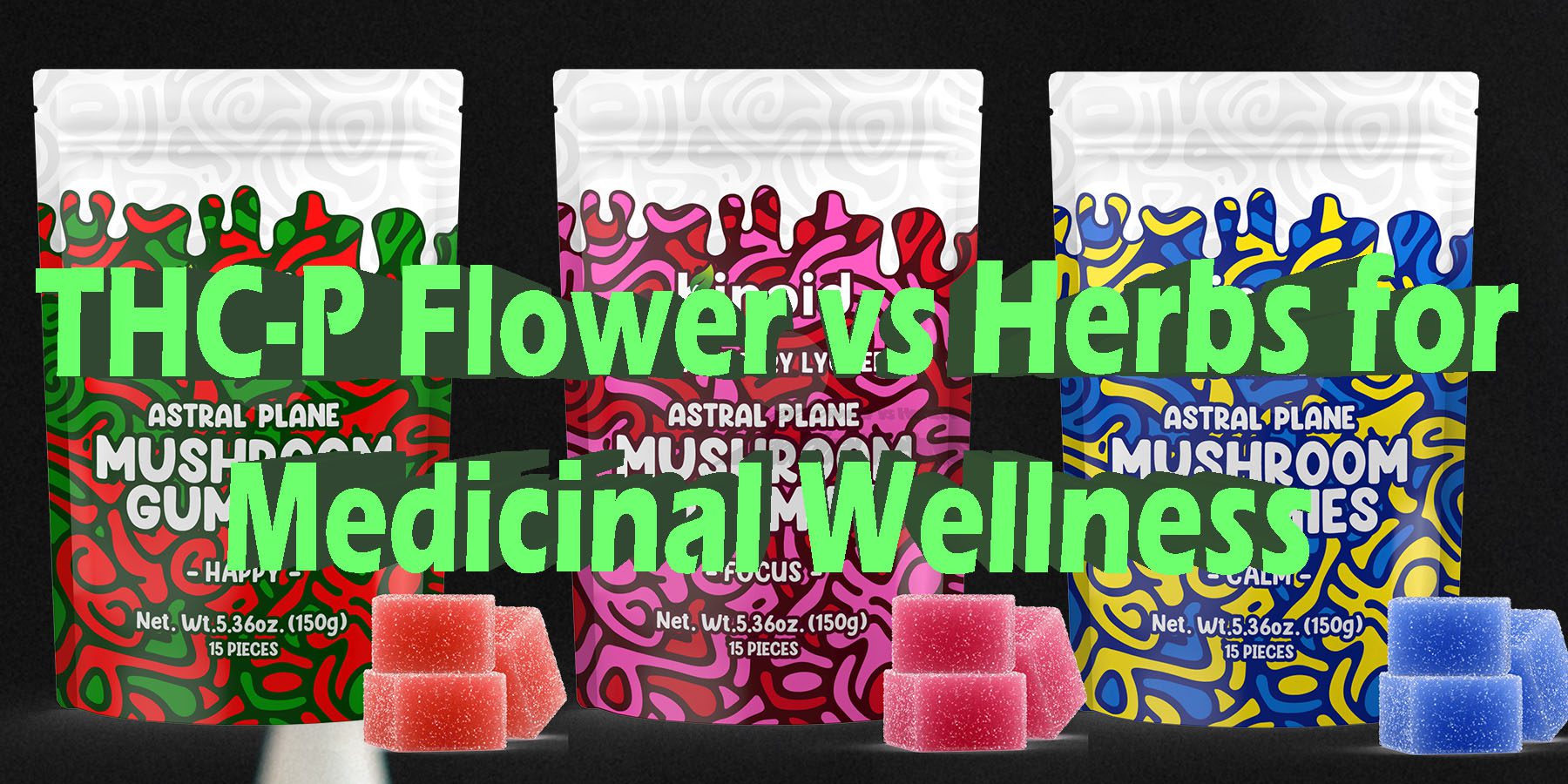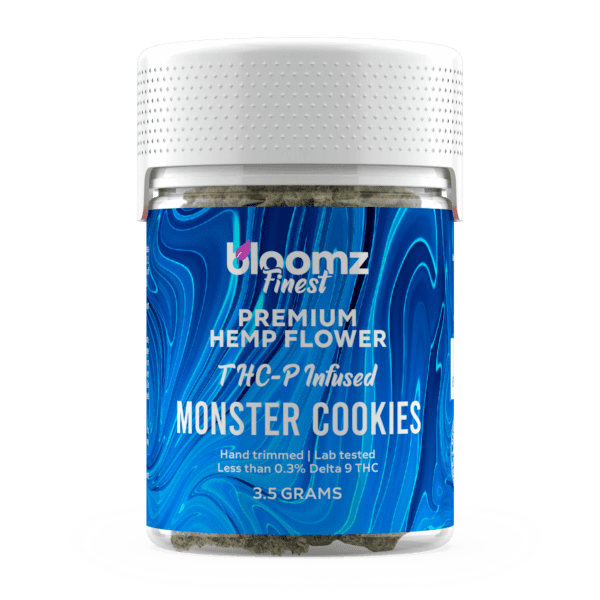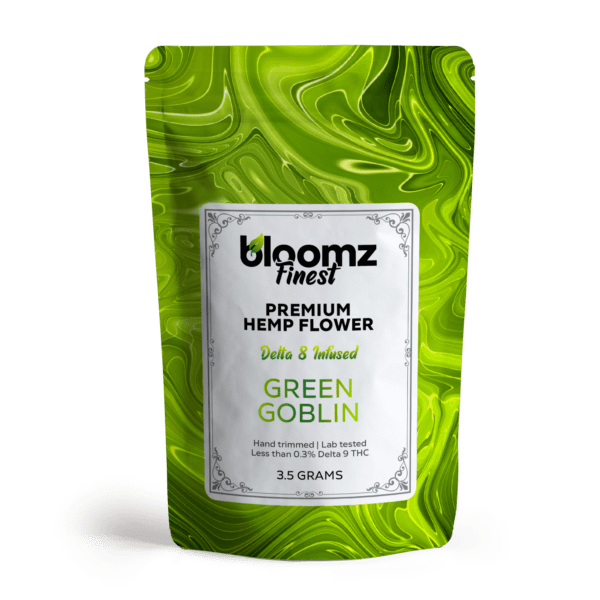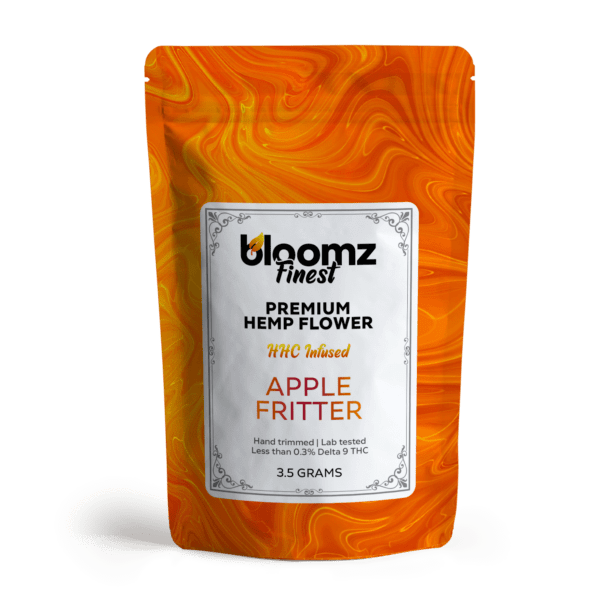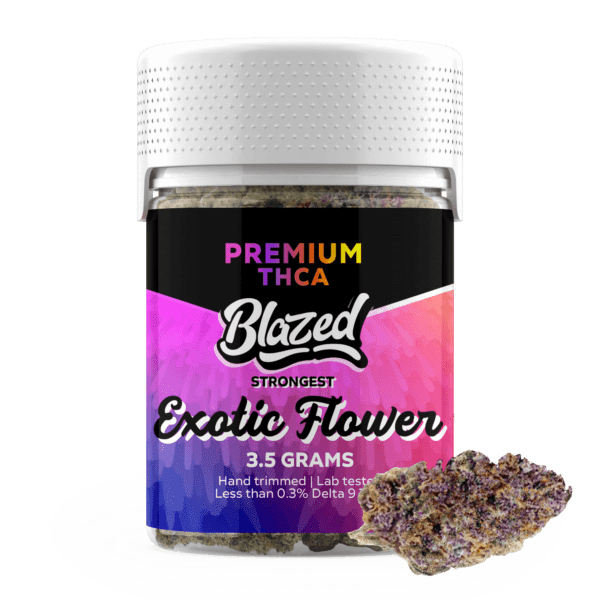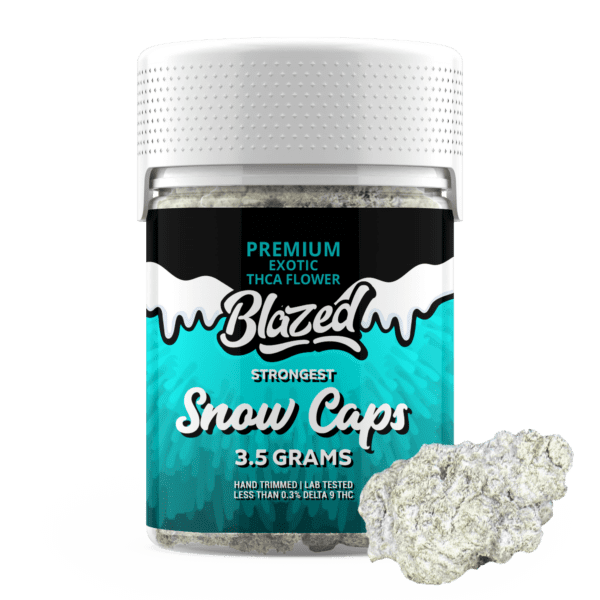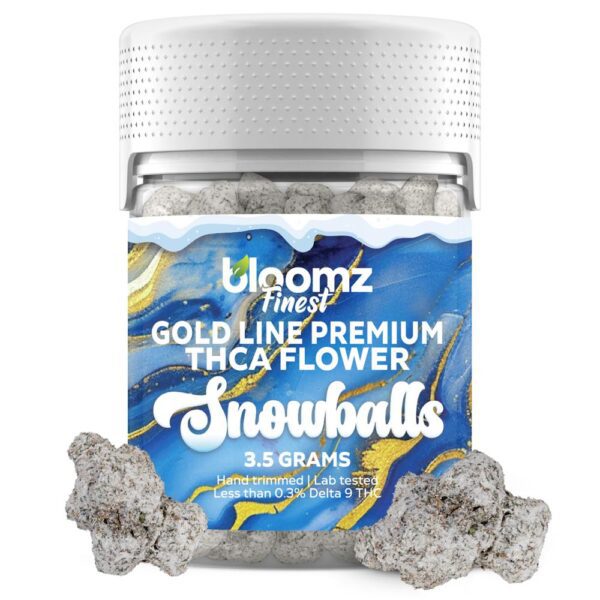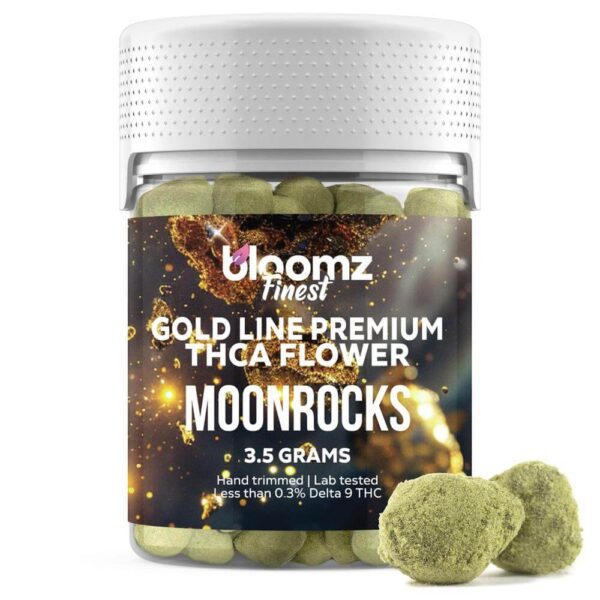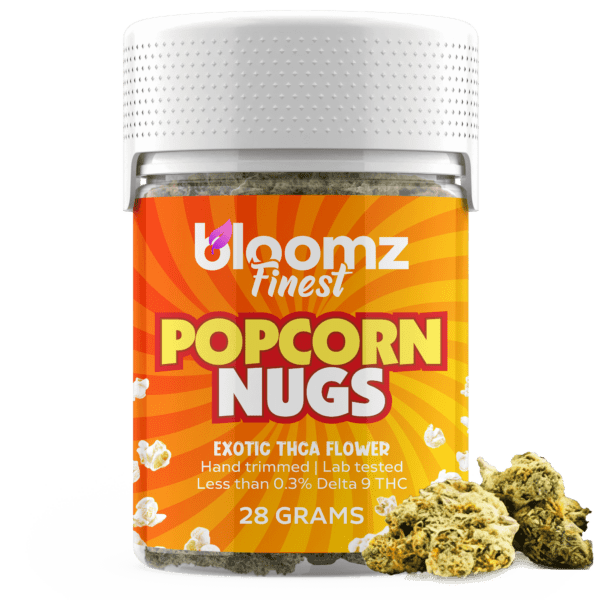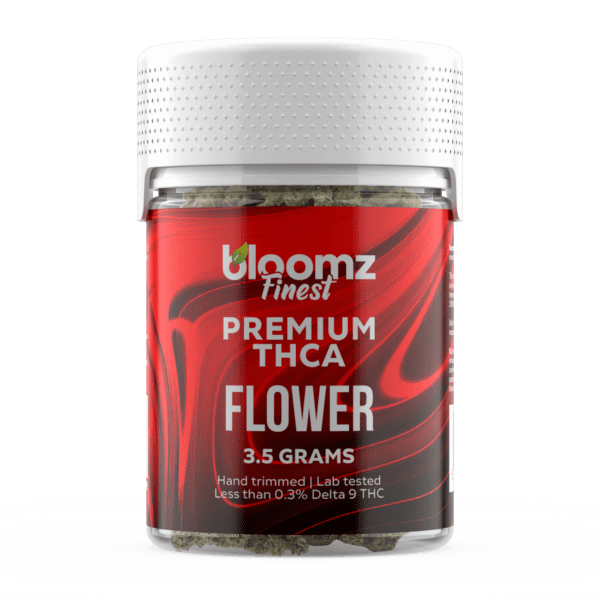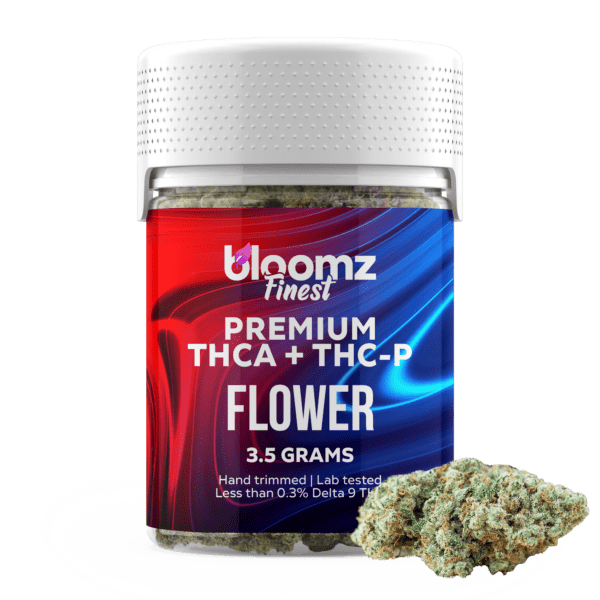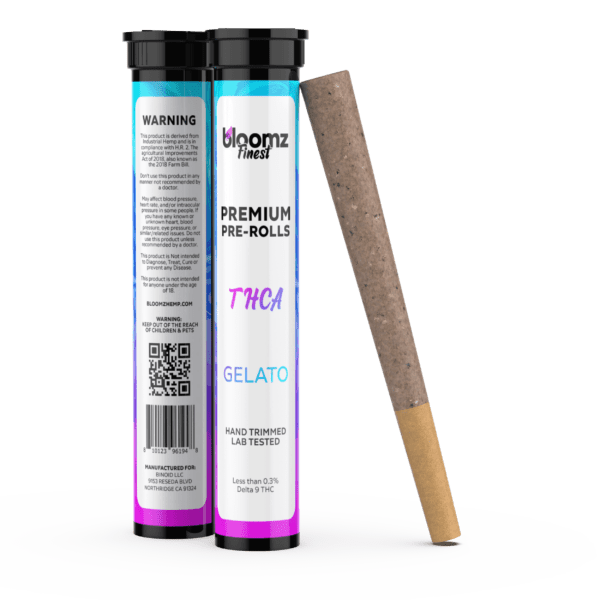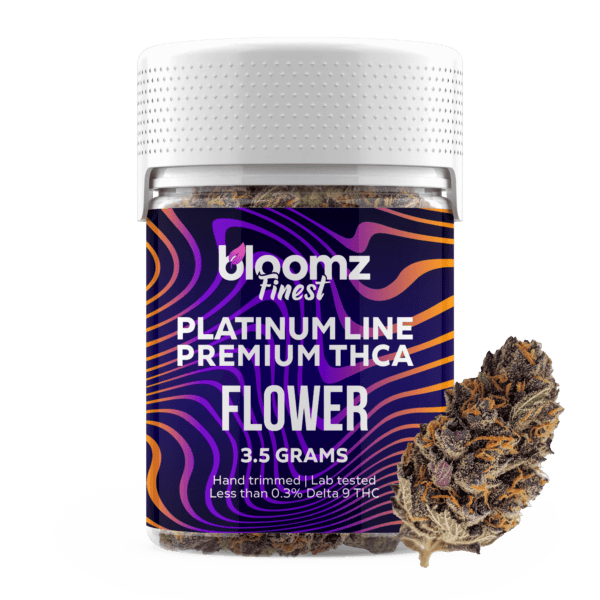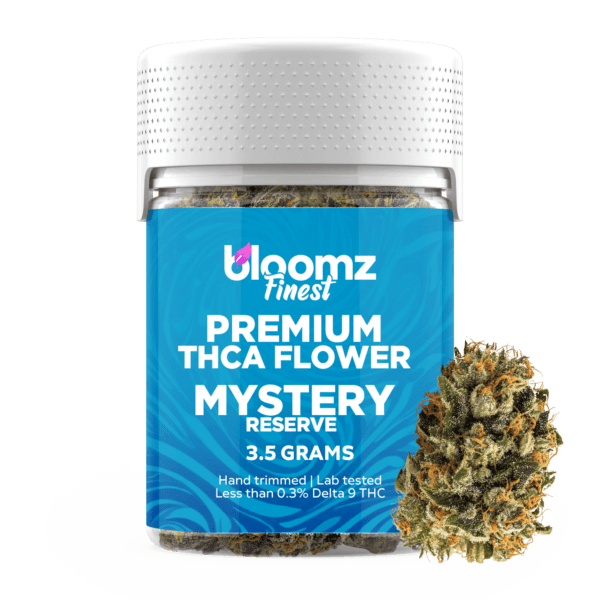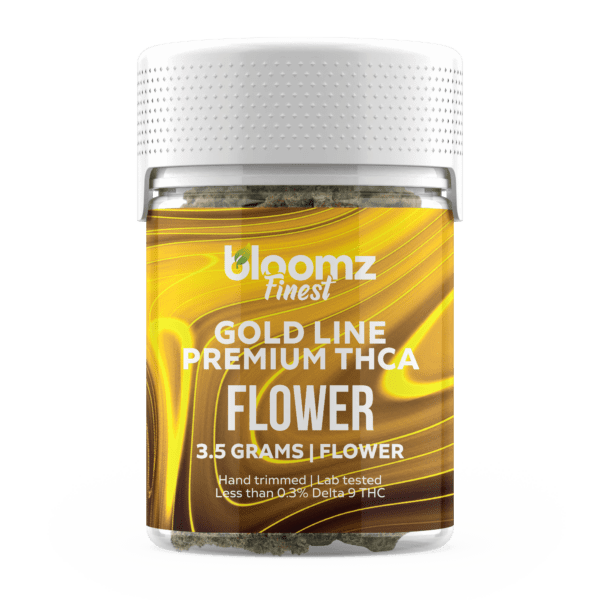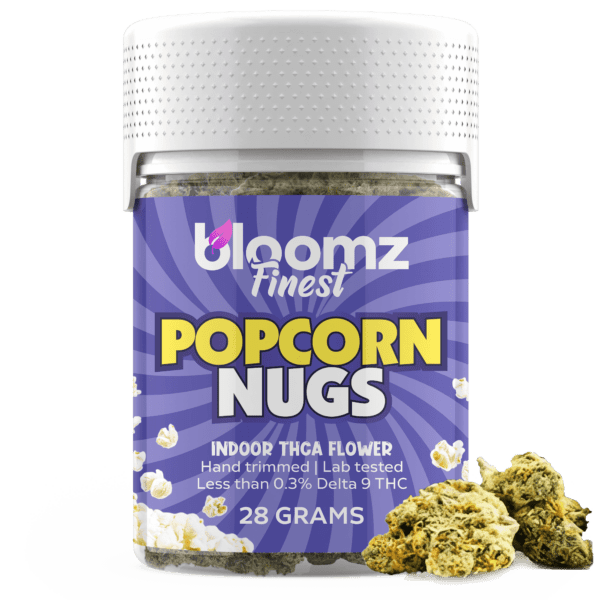In the ever-expanding universe of natural wellness, the paths to personal well-being are as diverse as the botanical world itself. Today’s explorer is presented with a spectrum of choices that stretches from the deepest roots of ancient tradition to the cutting-edge frontiers of phytochemical science. On one end of this spectrum, we find the quiet, enduring wisdom of traditional herbs, a vast apothecary of plants that have been companions to humanity for millennia, offering gentle and foundational support. At the opposite, most dazzling edge, a new and powerful contender has emerged: THC-P flower, a product of modern cannabinoid science that promises an experience of unparalleled intensity.
To consider these two options side-by-side is to witness a fascinating dialogue between the old and the new, the subtle and the profound. This journey is about understanding the core philosophies they represent and the profoundly different experiences they offer to those seeking to curate their own path to wellness.
TO BUY THC-P FLOWER CLICK HERE
Recommended products
Why It’s Important to Breakdown the Matchup of THC-P Flower vs. Herbs for Wellness
When a substance as novel and potent as THC-P enters the wellness arena, the need for clear, detailed, and responsible information becomes paramount. A thorough breakdown of THC-P flower versus traditional herbs is not merely an interesting comparison; it is an essential public service for consumer safety and education. Given THC-P’s reported potency, which is believed to be many times that of conventional Delta 9 THC, it is crucial to clearly delineate its character from the gentle, non-intoxicating nature of wellness herbs.
This matchup helps to contextualize this new cannabinoid, preventing dangerous misconceptions and ensuring that individuals understand the vastly different commitments these two paths entail. By placing them in direct comparison, we can highlight the immense gulf in their intensity, mechanism of action, and appropriate use cases, which is the first step toward responsible exploration.
Furthermore, dissecting this matchup sheds a crucial light on the distinction between a naturally grown product and a laboratory-augmented one. Traditional herbs are typically consumed in forms close to their original state. THC-P flower, however, is a manufactured product where a base hemp flower is infused with a THC-P concentrate that has been synthesized in a lab.
This is a critical point that impacts everything from product consistency to the potential for unknown byproducts. A detailed comparison forces a conversation about transparency, manufacturing processes, and the user’s philosophical comfort with consuming a semi-synthetic compound born from complex chemistry versus a simple, whole-plant remedy. This understanding is fundamental to making a truly informed choice that aligns with one’s personal values.
The legal and regulatory frameworks surrounding these two categories also could not be more different, making a detailed breakdown essential for safe and legal access. Traditional herbs exist within the relatively stable and understood world of dietary supplements and foods. THC-P, on the other hand, inhabits a precarious legal gray area, technically derived from hemp under the 2018 Farm Bill but potentially subject to other regulations like the Federal Analogue Act. Its status is often challenged at the state level, creating a volatile and confusing landscape for consumers. Clarifying these legal nuances is an indispensable part of a responsible guide, helping users to navigate potential risks and make decisions with a full understanding of the current legal climate.
Finally, this comparison serves to manage expectations and define intentions. The intention behind using a powerful psychoactive substance like THC-P is fundamentally different from the intention behind incorporating a gentle adaptogen like ashwagandha into one’s routine. One is for an acute, profound, and perception-altering experience, while the other is for long-term, subtle, and foundational support. By breaking down their respective pros, cons, and experiential profiles, we help individuals clarify their own wellness goals. This ensures that the chosen botanical ally is the right tool for the job, preventing disappointment and, more importantly, misuse that could arise from a fundamental misunderstanding of what each contender is designed to offer.
Contender #1: THC-P Flower
Our first contender emerges from the farthest reaches of cannabinoid research, representing the absolute pinnacle of potency currently available in the hemp-derived market. THC-P flower is a product that commands respect and demands a cautious approach, as it is built around a cannabinoid of extraordinary strength. This is not just another minor variation in the cannabis family; it is a significant leap in intensity, offering an experience that is reportedly more profound, immersive, and long-lasting than anything that has come before it. THC-P flower is for the seasoned psychonaut, the experienced cannabinoid enthusiast who is seeking to explore the very boundaries of the cannabis experience. Its appeal is rooted in its sheer power and novelty, offering a glimpse into a new dimension of euphoria and relaxation for those who are prepared for its remarkable journey.
Tetrahydrocannabiphorol (THC-P) is a naturally occurring phytocannabinoid that was only recently discovered by a team of Italian researchers in 2019. Its discovery sent shockwaves through the cannabis science community due to its unique molecular structure. Like its famous cousin, Delta 9 THC, THC-P has a central structure that allows it to bind to the body’s cannabinoid receptors. However, it possesses one crucial difference: a longer alkyl side chain. Whereas Delta 9 THC has a five-carbon atom (pentyl) side chain, THC-P boasts a seven-carbon atom (heptyl) side chain. This seemingly small modification dramatically enhances its ability to bind with the CB1 receptors in the brain, which are the primary gateways for THC’s psychoactive effects.
Think of the CB1 receptor as a lock and the cannabinoid as a key; the longer side chain allows THC-P to fit more securely and effectively into the lock. Scientific research suggests that THC-P may have a binding affinity for the CB1 receptor that is up to 33x stronger than that of Delta 9 THC. This does not mean it is necessarily “33 times stronger” in a simplistic sense, but it does mean that it is exceptionally potent and can produce powerful psychoactive effects at much lower doses.
Recommended products
The creation of THC-P flower is a testament to the sophisticated manufacturing processes developed within the modern hemp industry. It is essential to understand that, like Delta 8 flower, THC-P flower is not a naturally grown product. Because THC-P exists in such minuscule concentrations in the actual cannabis plant, it isn’t feasible to extract it directly. Instead, the potent THC-P distillate used to create these products is synthesized in a laboratory, and then carefully applied to a base of high-quality hemp flower. The precision required in this process is paramount, as even a small miscalculation with such a potent compound could lead to an overwhelmingly intense product:
Cultivation of Premium Hemp Flower: The foundation of any good THC-P flower is a high-quality, legally compliant hemp flower. Expert cultivators grow specific strains of hemp, often indoors, that are rich in CBD or CBG and have a robust and appealing terpene profile. This base flower is then harvested, carefully trimmed, and slow-cured to preserve its aroma and ensure a smooth smoking experience.
Extraction and Conversion: While THC-P is naturally occurring, it is only present in cannabis in microscopic quantities, making direct extraction impossible for commercial production. Instead, chemists start with abundant, hemp-derived CBD. Through a complex process in a controlled laboratory setting, the CBD molecules are chemically rearranged and converted into THC-P. This process yields a thick, highly concentrated oil known as THC-P distillate.
Formulation and Blending: Pure THC-P is so potent that applying it directly to flower would create a product that is potentially unsafe and unmanageable for most users. Therefore, reputable manufacturers create a blended distillate. They will mix the THC-P with a less potent cannabinoid, most commonly Delta 8 THC, to create a more balanced and predictable formula. This allows them to control the final potency of the product.
Infusion Process: The carefully formulated cannabinoid blend is then applied to the cured hemp flower. The distillate is often gently heated to make it less viscous and then sprayed evenly over the buds. Other methods include using a cryo-process to freeze the distillate into a powder for dusting or using a light tumbling process to ensure all surfaces of the flower are coated.
Third-Party Lab Testing: This final step is the most crucial for consumer safety. The finished batch of THC-P flower is sent to an independent, third-party laboratory. The lab conducts a full panel of tests to verify the potency of THC-P and other cannabinoids, and, most importantly, to screen for any harmful residual solvents, pesticides, or heavy metals, ensuring the final product is both potent and safe for consumption.
The market for THC-P flower is tailored for the high-end of the potency spectrum and, as such, is somewhat more specialized than the broader Delta 8 market. The types and categories available reflect a focus on delivering this exceptionally powerful experience in a high-quality format. The quality of the final product is a direct result of two factors: the quality of the base hemp flower and the purity and skillful application of the THC-P distillate. Because of the extreme potency, users typically consume much less of this flower at a time, making the quality of each inhalation particularly important.
The available formats cater to different user preferences, from those who like to handle the raw flower to those who prefer the convenience of a ready-made product.
Indoor THC-P Flower: This represents the premium standard. It utilizes top-shelf, indoor-grown CBD or CBG hemp flower as its base. This flower is prized for its flawless appearance, dense structure, rich terpene profile, and overall quality. When infused with the THC-P blend, it results in a connoisseur-grade product that delivers the best possible experience in terms of flavor, smoothness, and effect.
Outdoor THC-P Flower: A more budget-conscious but still effective option, this product uses sun-grown hemp flower as its foundation. While outdoor flower might have a more rustic appearance, it can possess a wonderfully complex and natural flavor profile. This option makes the ultra-potent experience of THC-P accessible to a wider audience.
THC-P Nugs: This term refers to the standard, full-sized, infused buds that are the primary product sold. When a consumer buys a jar of THC-P flower, they are purchasing these nugs. They are selected for their good size and structure and represent the standard quality for this type of product.
THC-P Moonrocks: For the user seeking the absolute maximum potency possible, moonrocks are the answer. A THC-P moonrock is a multi-layered creation. It starts with a high-quality hemp nug, which is then dipped in or coated with a potent, sticky THC-P distillate blend. Before this coating can dry, the entire nug is rolled in a thick layer of cannabinoid-rich kief. The result is an incredibly dense, slow-burning, and overwhelmingly potent product that should only be approached by the most experienced consumers.
THC-P Pre-Rolls, Blunts & Joints: Offering convenience and a controlled dosage, pre-rolls are a popular option. These are pre-made joints or blunts that contain a specific amount of ground THC-P flower. They eliminate the need for any preparation on the user’s part and are perfect for trying the product without committing to a larger quantity. They also provide a useful, albeit still very potent, baseline for understanding one’s tolerance.
When encountering THC-P flower, it is essential to understand the role of the strain name (e.g., Indica, Sativa, Hybrid) listed on the product. This name does not refer to a strain of THC-P plant, but rather to the strain of the base hemp flower that was used in its creation. The hemp flower provides the product’s foundational aromatic and flavor profile through its unique blend of terpenes. Terpenes are the compounds responsible for the citrusy, piney, earthy, or fruity notes found in different cannabis varieties. Many believe these terpenes also help to steer or modulate the psychoactive experience, a concept known as the entourage effect.
Therefore, the overall experience of THC-P flower is a powerful symphony conducted by the intense psychoactivity of the THC-P itself, with the specific hemp strain’s terpenes acting as the nuanced instrumentation that colors the final piece:
Indica: A THC-P flower product with an Indica strain name, such as “Northern Lights” or “Ice Cream Cake,” uses an Indica-variety of hemp flower as its base. These strains are known for their relaxing, body-centric effects and are often rich in the terpene myrcene, which has an earthy, musky aroma. When the profound power of THC-P is combined with an Indica profile, the result is an experience of overwhelming physical relaxation and a deep, sedative-like calm, making it strictly suitable for evening use or moments of complete repose.
Sativa: When a Sativa hemp strain like “Sour Diesel” or “Green Crack” is used as the base, the product is designed to provide a more cerebral and uplifting journey. Sativa strains are typically high in terpenes like limonene and terpinolene, which provide bright, energizing citrus and fruit aromas. The combination of these terpenes with the intense euphoria of THC-P can lead to a powerful, cerebrally-focused experience characterized by creative rushes, profound thoughts, and a sense of vibrant energy.
Hybrid: Hybrid strains are the result of crossbreeding Indicas and Sativas, and they make up the majority of the market. A THC-P flower made with a Hybrid hemp strain aims to deliver a balanced, multi-faceted experience. Depending on its specific lineage, a Hybrid can be Indica-dominant (profoundly relaxing with a strong euphoric lift), Sativa-dominant (intensely cerebral with a heavy body sensation), or a true balance of both. This category offers a wide range of nuanced experiences built upon the foundational intensity of THC-P.
The legality of THC-P flower in the United States is a topic of significant complexity and debate, existing in a precarious legal gray area. Its claim to legality is staked on the 2018 Agriculture Improvement Act (the Farm Bill), which legalized hemp nationwide. The bill defines hemp as any cannabis plant, and its derivatives, that contains no more than 0.3% Delta 9 THC on a dry weight basis. Since THC-P is a cannabinoid other than Delta 9 THC, and the THC-P distillate used in products is derived from hemp-based CBD, producers and retailers argue that it is a federally compliant hemp derivative.
However, this interpretation is not universally accepted. The Drug Enforcement Administration (DEA) has stated that all “synthetically derived tetrahydrocannabinols” remain Schedule I controlled substances. As THC-P is created for commercial purposes through a chemical conversion of CBD, it could be considered “synthetically derived” under this rule, which would make it federally illegal.
This direct conflict between the legislative text and regulatory interpretation means THC-P exists in a state of high legal risk. Furthermore, many states have enacted their own specific bans on THC-P and other psychoactive hemp-derived cannabinoids, making it explicitly illegal within their borders regardless of the federal situation. Consumers must exercise extreme caution and thoroughly research their state and local laws.
Given that THC-P flower is, at its core, a form of smokable cannabis flower, it can be consumed using all the familiar and traditional methods. The primary objective of any consumption method is to apply heat to the flower. This action vaporizes the infused THC-P distillate and the hemp flower’s native terpenes and cannabinoids, creating an inhalable vapor or smoke that can be absorbed rapidly into the bloodstream via the lungs for a fast-acting effect. However, due to the extreme potency of THC-P, the approach to these consumption methods must be drastically different. It is not a product to be consumed casually or in large quantities. A single, small inhalation is often more than sufficient for even experienced users.
Recommended products
The quality of the experience can be influenced by the chosen method, with vaporization often providing a more flavorful and less harsh experience than combustion:
Vaping (using a portable or desktop vaporizer): Vaporizing is highly recommended for THC-P flower as it allows for greater control and a cleaner experience. A dry herb vaporizer heats the material to a precise temperature, creating a vapor without burning the plant matter. This preserves the delicate terpene profile of the base hemp flower, leading to a much better taste. More importantly, it is easier to take a single, small, controlled puff from a vaporizer, which is the wisest way to approach a cannabinoid of this strength.
Smoking: This traditional method involves burning the flower in a pipe, bong, or rolled into a joint. While effective and providing a very rapid onset, it can be much harder to control the dose. If smoking THC-P flower, it is advisable to pack a very small amount—often called a “snap” or “one-hitter”—to ensure you do not inadvertently consume too much. Mixing a tiny crumb of THC-P flower with a larger amount of CBD flower is another common strategy for moderating the intense effects.
Cooking/Baking: Using THC-P flower to make edibles is possible but should only be attempted by the most advanced and cautious users with a very high tolerance. The flower would first need to be infused into a fat like butter or oil. The resulting edible would be extraordinarily potent and have a very long duration of effects, potentially lasting for over 12 hours. Dosing would be extremely difficult and carries a significant risk of an overwhelmingly negative experience if done incorrectly. Using pre-made, lab-tested THC-P edibles from a reputable source is a much safer alternative.
The overall effects of consuming THC-P flower are best described as a profoundly amplified and intensified version of the traditional cannabis experience. Due to its powerful affinity for the CB1 receptor, the onset can be surprisingly rapid and the effects are of a magnitude that often surprises even veteran cannabis consumers. The primary characteristic is an overwhelming wave of euphoria and mental bliss that is far more enveloping and profound than what is experienced with Delta 9 THC. This cerebral journey is often accompanied by significant perceptual shifts; colors may seem more saturated, sounds may take on new depth, and the user’s thought processes can become deeply introspective or creatively expansive.
Physically, THC-P induces a powerful and heavy body sensation that can feel deeply relaxing and sedative, often leading to a strong desire for rest and comfort, a phenomenon known as “couch-lock.” A crucial aspect of the THC-P experience is its remarkably long duration. The effects can persist for many hours longer than traditional THC, and a residual feeling can sometimes last into the next day. This is not a cannabinoid for the faint of heart; it is a full-commitment experience for those seeking the deepest possible journey.
Pros & Cons
Engaging with a cannabinoid as formidable as THC-P requires a sober and thorough evaluation of its powerful advantages and its significant potential drawbacks. This is a substance of extremes, and its profile of pros and cons reflects this reality. For a small subset of highly experienced users, its benefits are unparalleled, offering a novel and profound experience. For the vast majority, however, the potential risks and the sheer intensity of the effects demand serious consideration. A balanced understanding is not just helpful; it is an essential prerequisite for anyone contemplating an encounter with this titan of the cannabinoid world.
Pros:
Unparalleled Potency: For the experienced cannabis user with a very high tolerance who may find traditional products no longer provide the desired effects, THC-P‘s extreme potency is its greatest asset. It offers a new level of intensity and a novel psychoactive experience that can break through tolerance ceilings, providing a profound and powerful journey that is unlike anything else on the legal market.
Profound Euphoria and Bliss: Users who are well-prepared for its strength often report an experience of deep and overwhelming euphoria. The mental effects can be intensely blissful and mood-lifting, providing a powerful escape and a significant shift in perspective. This can lead to profound moments of introspection or heightened appreciation for sensory inputs like music and art.
Long-Lasting Effects: The extended duration of the THC-P experience can be a significant advantage for users who want a prolonged period of effects without needing to re-dose. A single consumption session can provide many hours of deep relaxation and euphoria, making it a potentially efficient option for a full afternoon or evening of leisure.
Requires Very Small Doses: Because it is so incredibly potent, only a very small amount of THC-P flower is needed to produce a strong effect. A little bit goes a very long way, which can make a purchase of THC-P flower last for a considerable amount of time. This can offer a unique form of value for the discerning, high-tolerance consumer.
Novelty and Exploration: As a relatively new and powerful discovery, THC-P offers a sense of excitement and exploration for the seasoned psychonaut. It represents a new frontier in the world of cannabinoids, providing an opportunity to experience a different and more intense facet of the cannabis plant’s potential.
Legal Accessibility (in some areas): Under the current interpretation of the 2018 Farm Bill, THC-P remains a federally compliant hemp derivative, making it legally accessible for online purchase and delivery in states that have not explicitly banned it. This provides a legal pathway to a hyper-potent product for adults in many parts of the country.
Deep Physical Relaxation: The physical effects of THC-P are often reported to be just as intense as its cerebral effects. It can induce a state of profound and heavy-bodied relaxation that many users find deeply calming. This powerful physical sensation is a hallmark of the experience for those seeking a potent body high.
Synergistic Potential in Blends: The potency of THC-P makes it a powerful ingredient in cannabinoid blends. Manufacturers can use it in small quantities alongside other cannabinoids like Delta 8 THC to significantly boost the overall potency and character of a product, creating unique and tailored effects profiles.
Familiar Consumption Methods: Despite its exotic nature, THC-P flower can be consumed using all the familiar methods like smoking or vaping. This allows users to engage with this new substance through a comfortable and well-understood ritual, lowering the barrier to entry for experienced individuals who are curious to try it.
Stimulates Innovation: The discovery and popularization of potent minor cannabinoids like THC-P drive further research and innovation in the hemp and cannabis industry. This encourages scientists to explore the hundreds of other compounds in the plant, potentially leading to new discoveries and a deeper understanding of its complex pharmacology.
Cons:
Extreme Potency is a Significant Risk: The single greatest con of THC-P is its extreme potency, which can be a serious liability. For new, inexperienced, or low-tolerance users, the effects can be terrifyingly overwhelming, leading to intense paranoia, confusion, and extreme discomfort. The risk of a “bad trip” is substantially higher than with any other common cannabinoid.
Virtually No Research on Safety: As a recently discovered and commercially synthesized compound, there is almost no long-term research on the safety profile of THC-P in humans. Its effects on physical and mental health over time are completely unknown. Users are venturing into uncharted territory from a scientific and medical perspective.
High Risk of an Overwhelmingly Long Experience: The long duration of THC-P’s effects can turn into a significant negative. If a user has an unpleasant or overwhelming experience, they may be trapped in that state for many hours, with residual effects lasting even longer. This can be a grueling and distressing ordeal, unlike a shorter-acting substance where one can “wait it out.”
Unstable Legal Status and Regulatory Scrutiny: THC-P exists in a precarious legal gray area. It is under constant threat from DEA reinterpretation and is being actively banned by an increasing number of states. Possessing it, even if purchased from a “legal” source, could carry significant legal risk depending on one’s location and the evolving legal landscape.
Contender #2: Herbs
Our second contender is not a single entity but a vast and venerable library of botanical knowledge, representing thousands of years of human experience with the natural world. Traditional herbs, in the context of wellness, are a global collection of plants whose roots, bark, leaves, flowers, and seeds have been used across countless cultures to support health and encourage a state of holistic balance. This is the enduring world of chamomile, ginseng, lavender, and turmeric—names that evoke a sense of grounding, tradition, and gentle, nurturing care.
Unlike the targeted, intense effect of a single semi-synthetic cannabinoid, the philosophy of herbalism is synergistic and multifaceted, relying on the complex interplay of a plant’s many natural compounds. Their timeless appeal is found in their deep historical roots, their incredible versatility in application, and their alignment with wellness paradigms that favor gradual, sustainable harmony over immediate, powerful alteration.
In the intricate lexicon of wellness, “herbs” are defined as plants or specific parts of plants that are valued and utilized for their aromatic, savory, or, most significantly, their therapeutic properties. This utilization is fundamentally rooted in the profound understanding that plants, in their own struggle for survival and procreation, synthesize an incredibly wide variety of chemical compounds for growth, defense against predators, and adaptation to their environment.
A great many of these compounds can have fascinating and beneficial effects on human physiology when consumed. These active constituents are categorized into complex classes, including alkaloids, which are nitrogen-containing compounds that can have powerful effects; flavonoids, which often contribute to plant pigmentation and have antioxidant properties; terpenes, the aromatic compounds responsible for the distinct scents of plants like pine and lavender; glycosides, phenols, and many more.
The philosophy undergirding herbalism is inherently holistic, viewing the plant as a complete, synergistic entity whose combined compounds work together more effectively and with greater balance than any single isolated component—a principle that mirrors the “entourage effect” concept found in cannabis. The application of these herbs is not typically intended to produce a single, potent, acute effect, but rather to provide gentle, cumulative support, helping to nourish and fortify bodily systems while promoting a state of equilibrium and resilience over extended periods of time.
The history of using herbs for wellness is inextricably linked with the history of humanity itself. Our earliest ancestors were hunter-gatherers whose survival depended on an intimate knowledge of the plant kingdom. This empirical knowledge, passed down through generations, formed the basis of the first systems of medicine. As civilizations arose, this wisdom was recorded and refined. Ancient Egyptian medical texts, such as the Smith Papyrus, detail the use of medicinal plants. In India, the ancient system of Ayurveda developed a highly sophisticated pharmacopeia of thousands of herbs to balance the body’s elemental energies, a practice documented in texts that are still studied today.
In China, the principles of Traditional Chinese Medicine (TCM) were established, using intricate herbal formulas to harmonize the flow of vital energy, or Qi. The foundations of Western herbalism were laid by the ancient Greeks and Romans like Dioscorides, whose work became the authoritative medical text in Europe for over 1,500 years. This rich herbal knowledge was the sole form of medicine for most of human history and provided the original templates for many of our most important modern pharmaceutical drugs.
While the global apothecary contains tens of thousands of herbs, a select group has achieved worldwide recognition for their long history of use, their gentle nature, and the growing body of scientific research that supports their traditional applications. These herbs serve as excellent introductions to the world of botanical wellness:
Ashwagandha (Withania somnifera): As a cornerstone of Ayurvedic medicine, ashwagandha is a celebrated adaptogen, a class of herbs believed to enhance the body’s resilience to life’s daily challenges. The root of this small shrub is used to promote a sense of calm, support restful sleep, and encourage overall vitality. Its active compounds, withanolides, are thought to help balance the body’s physiological responses, fostering a state of equilibrium.
Chamomile (Matricaria recutita): These small, daisy-like flowers are perhaps the most famous relaxing herb in the Western world. For centuries, a warm cup of chamomile tea has been a beloved ritual to unwind and prepare for a peaceful night’s sleep. Its gentle, calming effects are largely attributed to a flavonoid called apigenin, which helps to soothe the nervous system and promote a sense of tranquility.
Lavender (Lavandula angustifolia): Known for its stunning purple flowers and an aroma that is synonymous with relaxation, lavender is a giant in the world of aromatherapy. Its scent, rich in the terpenes linalool and linalyl acetate, has been shown to create a serene and calming atmosphere. While often used externally as an essential oil, its flowers can also be used in teas and foods to impart a sense of peaceful well-being.
Ginger (Zingiber officinale): This pungent, spicy rhizome is a staple in both kitchens and traditional apothecaries around the world. Ginger is renowned for its warming properties and its ability to support healthy digestion and soothe an upset stomach. Its main active compound, gingerol, is a potent antioxidant and is responsible for its characteristic fiery flavor.
Mint (Mentha species, especially Peppermint): The refreshing and cooling sensation of peppermint makes it an instantly recognizable and beloved herb. Traditionally used to support both respiratory health and digestive comfort, its active compound, menthol, provides its signature crisp aroma and soothing properties. A cup of peppermint tea is a classic and effective way to freshen the senses and calm the digestive system after a meal.
Ginseng (Panax species): Considered a precious “king” of herbs in Traditional Chinese Medicine, the gingseng root is a powerful adaptogen used to support energy, stamina, and mental clarity. It is a slow-growing plant whose active compounds, ginsenosides, are believed to bolster the body’s vitality and life force (Qi). It is often used to combat feelings of fatigue and support cognitive performance.
Turmeric (Curcuma longa): The brilliant golden-orange rhizome of the turmeric plant is a culinary spice and a revered Ayurvedic herb. Its primary active ingredient, curcumin, is a powerful antioxidant that has been extensively studied for its ability to support a healthy inflammatory response in the body. To enhance its benefits, it is often consumed with black pepper, which contains piperine to increase absorption.
Ginkgo (Ginkgo biloba): The unique, fan-shaped leaves of the ancient ginkgo tree have been used for centuries in TCM to support brain health and circulation. Ginkgo is most famously associated with supporting cognitive functions like memory and focus. It is rich in unique compounds, including flavonoids and terpenoids, that are believed to help promote healthy blood flow, particularly to the brain.
The enduring relevance of herbs is due in large part to their incredible versatility. They can be prepared and integrated into one’s life in a multitude of forms, ensuring that there is a suitable method for every lifestyle, preference, and tradition. This adaptability allows the wisdom of herbalism to thrive in the modern world, from simple, ancient preparations to sophisticated contemporary products:
Powders: Dried herbs can be finely milled into powders, which are perfect for blending into smoothies, stirring into yogurt or oatmeal, or adding to recipes. This method allows for the consumption of the whole herb and offers easy, customizable dosing.
Edibles: The wellness industry has embraced functional foods, creating products like herbal gummies, infused chocolates, and snack bars. This makes taking herbs a delicious and convenient treat rather than a chore.
Tinctures: Tinctures are concentrated liquid extracts that offer potency and a long shelf life. A few drops of a tincture under the tongue or in a beverage can provide a rapid and precisely measured dose of the herb’s active compounds.
Capsules: For those who want maximum convenience and wish to avoid the often-strong taste of many herbs, capsules are the perfect solution. They provide a tasteless, pre-measured, and consistent dose every time.
Beverages: Brewing herbal tea is the most traditional and ritualistic method of consumption. The simple act of steeping herbs in hot water is a calming practice in itself. The modern market has also exploded with ready-to-drink herbal teas, tonics, and sparkling botanical waters.
Dietary Supplements: This broad category includes tablets and softgels that usually contain a standardized herbal extract, which is formulated to deliver a specific and guaranteed amount of a key active compound.
Pre-Workout Products: Many natural pre-workout supplements now use stimulating and adaptogenic herbs like rhodiola and ginseng to support energy and endurance as an alternative to synthetic ingredients.
A key feature of the modern natural products industry is the creation of synergistic formulas that combine herbs with specific vitamins, minerals, and amino acids. This approach is based on the scientific principle that these ingredients can work together to create an effect that is greater than the sum of its parts. For instance, a formula for joint support might combine the herb boswellia with glucosamine and chondroitin. A blend for mood support might pair the herb St. John’s Wort with B-vitamins and the amino acid 5-HTP. This allows for the creation of sophisticated, multi-action products that address wellness goals from multiple angles.
Another powerful trend in wellness is the combination of traditional herbs with functional mushrooms. Fungi like Reishi, Lion’s Mane, and Cordyceps have their own rich histories of use and contain unique bioactive compounds, such as beta-glucans, that are not found in plants. By blending the botanical and fungal kingdoms, formulators can create potent synergistic products. For example, the adaptogenic herb astragalus could be combined with a blend of immune-supportive mushrooms like Turkey Tail and Chaga. The cognitive-supporting Lion’s Mane mushroom could be paired with the herb ginkgo biloba for a comprehensive brain health formula.
The latest frontier in formulation is the combination of traditional herbs with cannabinoids derived from the hemp plant. This innovative approach unites the ancient wisdom of herbalism with the modern science of the endocannabinoid system (ECS). By pairing herbs with non-intoxicating cannabinoids like CBD, CBG, or CBN, or even compliant amounts of Delta 8 THC, HHC, or Delta 9 THC, formulators can create products with targeted and enhanced effects. For example, a relaxing blend might combine chamomile and lavender with CBD and CBN. A topical for physical comfort might blend the herb arnica with the cannabinoid CBG. This allows for a multi-system approach, where the herbs and cannabinoids work on different but complementary pathways in the body.
The overall effects of herbs are characterized by their gentle, subtle, and cumulative action. Unlike the immediate and powerful psychoactive experience delivered by HHC flower, herbs work quietly in the background to support and nourish the body’s own systems. The goal is not to induce a dramatic shift in consciousness but to foster a state of balance and resilience over time. The benefits of an adaptogen are not felt as a sudden “kick,” but as a gradual realization over weeks that one is feeling more centered and energetic. The effects of a digestive herb like peppermint are a gentle and immediate soothing of the stomach. The herbal path is a marathon, not a sprint, focused on building a strong and resilient foundation for lasting well-being.
Pros & Cons
The ancient and gentle path of herbalism offers a wealth of benefits for those seeking to support their well-being, but it is not without its limitations. A balanced and realistic understanding of its distinct advantages and potential drawbacks is key to successfully incorporating these botanical allies into one’s life. This allows for the setting of proper expectations and ensures that the herbal approach is the right fit for an individual’s specific goals and lifestyle.
Pros:
The non-psychoactive nature of almost all wellness herbs is their most significant advantage. This allows them to be used safely at any time of day without fear of intoxication or impairment. They can be part of a morning routine before work or an evening ritual before bed without disrupting one’s clarity, focus, or ability to function.
Herbs are broadly legal and socially accepted worldwide. Regulated as foods or supplements, they are easily accessible in mainstream stores and online without legal risk or social stigma. This low barrier to entry makes herbalism an incredibly approachable form of natural wellness for nearly everyone.
The sheer biodiversity of the plant kingdom provides an incredible array of herbal options. This allows for a highly personalized approach to wellness, where individuals can choose specific herbs or formulas to support their unique needs, whether for digestion, sleep, energy, or mood.
The effects of herbs are typically gentle and work in harmony with the body’s own homeostatic mechanisms. They act as supportive tonics rather than powerful agents of change, which is ideal for those seeking to build sustainable, long-term health and resilience.
Engaging with herbalism is a way to connect with millennia of human tradition and wisdom. The simple ritual of preparing and drinking herbal tea can be a mindful and grounding practice, adding a layer of historical and cultural richness to one’s wellness routine.
The versatility of herbal preparations is a major pro. With options ranging from teas and tinctures to capsules and gummies, there is a format to suit any preference or lifestyle. This adaptability makes it easy to maintain a consistent herbal regimen.
Many fundamental and effective herbs are quite affordable, especially when purchased as loose, dried botanicals. This makes the foundational aspects of herbal wellness accessible to people from all economic backgrounds, democratizing natural health.
The sensory aspects of herbs—their aromas, tastes, and colors—are a significant part of their benefit. The practice of aromatherapy is based on the mood-lifting effects of plant scents, and the enjoyment of a flavorful herbal tea adds a pleasurable dimension to the experience.
A growing body of scientific research is continually exploring and validating the traditional uses of many herbs. This evidence-based approach gives consumers more confidence in the efficacy and safety of herbal products and deepens our understanding of how they work.
The modern wellness market excels at creating synergistic formulas that combine herbs with other beneficial ingredients like vitamins, mushrooms, and cannabinoids. These sophisticated blends can offer more targeted and comprehensive support than a single herb alone.
Cons:
The dietary supplement industry, which governs most herbal products, is not as strictly regulated as the pharmaceutical industry. This can lead to inconsistencies in product quality, purity, and potency. Consumers must take on the responsibility of researching brands and verifying third-party lab tests.
The gentle, cumulative nature of herbs requires patience and consistency. The benefits are often subtle and may take weeks or even months of daily use to become noticeable. This can be a drawback for those seeking quick and dramatic results.
Even though they are natural, herbs are biochemically active and can cause side effects, allergic reactions, or interact negatively with prescription medications. It is crucial to consult with a healthcare professional before starting an herbal regimen, especially for those with pre-existing health conditions or who are taking other medications.
The flavor of many medicinally potent herbs can be intensely bitter, earthy, or otherwise challenging to the palate. This can be a significant barrier to compliance for some individuals, limiting their options to capsules or other forms that mask the taste.
How to Go About Choosing Which Option
The decision between the explosive power of THC-P Flower and the gentle persistence of traditional herbs is a profound fork in the wellness road. Making the right choice isn’t about determining which’s superior, but about honest self-assessment to determine which is appropriate for you. Your decision should be guided by your experience level, your wellness goals, your personal risk tolerance, and the very nature of the outcome you desire. Are you an experienced user seeking to explore the absolute limits of psychoactivity for recreational or introspective purposes, or are you looking to build a long-term foundation of subtle, daily support? The answer to this question will point you clearly in one direction or the other.
To make this choice clearer, it is essential to respect the fundamental identities of each contender. THC-P flower is a product of extreme potency, designed for acute, infrequent use by only the most seasoned cannabis veterans. Its purpose is to deliver an overwhelming wave of euphoria and a perception-altering experience that is far beyond the norm. It is a high-risk, high-reward substance that demands utmost caution, careful planning, and a deep respect for its power. It is not a tool for casual or daily wellness.
Traditional herbs occupy the opposite end of the spectrum entirely. They are tools for daily, foundational support. Their non-intoxicating nature and gentle, cumulative effects are designed to be woven into the fabric of everyday life. The herbal path is one of consistency, patience, and a commitment to long-term balance. It is a low-risk, sustainable practice suitable for almost anyone looking to gently nourish their body and mind over time.
|
Feature |
THC-P Flower |
Traditional Herbs |
|---|---|---|
|
Primary Effect |
Extremely potent, psychoactive |
Non-psychoactive, balancing |
|
Onset Time |
Very fast (minutes) via inhalation |
Slow & cumulative (days to weeks) |
|
Primary Use Case |
Acute, recreational, for veteran users |
Daily, foundational, long-term support |
|
User Experience Level |
Experts only |
Suitable for all levels |
|
Safety Profile |
High risk, under-researched |
Generally safe, well-documented |
|
Legality |
Legally precarious and volatile |
Widely legal and accessible |
|
Cognitive Impact |
Profound impairment, intoxicating |
None, can be used anytime |
|
Product Nature |
Manufactured (hemp flower + distillate) |
Natural (dried/extracted plant matter) |
|
Dosing |
Very difficult, high risk of overdose |
Easy, flexible, low risk |
|
Best For |
Experienced users seeking ultimate potency |
Anyone seeking gentle, sustained wellness |
Ultimately, for the vast majority of people, these two categories should not even be considered as equivalent choices. They serve entirely different purposes. For nearly everyone seeking to enhance their general sense of well-being, the safe, gentle, and sustainable path of traditional herbs is the logical and responsible choice. THC-P flower belongs in a separate category altogether, a niche product for a very small subset of highly experienced individuals who are fully aware of and prepared for its immense risks and powerful effects.
The Architect of Your Well-Being
In the grand design of your personal health, you are the sole architect, choosing the materials and methods that will build a life of balance and vitality. The botanical world offers a rich quarry of resources, from the steady, reliable granite of traditional herbs to the dazzling, volatile energy of a compound like THC-P. A wise architect understands the properties of each material and uses it for its intended purpose. By approaching these choices with knowledge, respect for their power, and a clear vision of the structure you wish to build, you can ensure that your creation is not only beautiful but also strong, safe, and built to last a lifetime.
TO BUY THC-P FLOWER CLICK HERE
Recommended products
-
THCA Flower – Platinum Line
$49.99$79.99 -
THCA Flower – Mystery Reserve
$41.99$79.99 -
THCA Flower – Indoor Exotics – Gold Line
$37.99$69.99 -
THCA Smalls
$149.99$256.99

